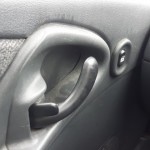**** EMO Media Release
Emergency Preparedness
If an emergency happens in your community, it may take emergency workers some time to get to you. You should be prepared to take care of yourself and your family for a minimum of 72 hours.
By taking a few simple steps today, you can become better prepared to face a range of emergencies – anytime, anywhere.
STEP 1: KNOW THE RISKS
Although the consequences of various emergency situations can be similar, knowing the risks in your region can help you better prepare. The most common emergency situations in our region are: winter storms, gas leaks, floods, forest fires, tropical storms/ hurricanes. In addition to natural disasters, there are other types of risks, such as power outages and industrial or transportation accidents.
*In addition to having a 72-hour emergency kit for your family, you should also prepare one for your pet. Preparing in advance will increase the likelihood that your animals remain safe and healthy during an emergency.
STEP 2: MAKE A PLAN
Every household needs an emergency plan. It will help you and your family know what to do in case of an emergency. Your family may not be together when an emergency occurs. Plan how to meet or how to contact one another, and discuss what you would do in different situations.
When making your home emergency plan, you will need to think about the following:
- Safe exits from home and neighbourhood
- Meeting places to reunite with family or roommates
- Designated person to pick up children should you be unavailable
- Contact persons close-by and out-of-town
- Special health needs
- Place for your pet to stay
- Risks in your region
- Location of your fire extinguisher, water valve, electrical box, gas valve and floor drain
*Photocopy your plan and keep it in your car and/ or at work.
STEP 3: GET AN EMERGENCY KIT
In an emergency you will need some basic supplies. You may need to get by without power or tap water. Be prepared to be self-sufficient for at least 72 hours. Make sure your kit is easy to carry and everyone in the household knows where it is. Keep it in a backpack, duffle bag or suitcase with wheels, in an easy-to-reach, accessible place, such as your front-hall closet.
Basic household emergency kit
- Drinking water – at least two litres per person per day and one litre per pet per day
- Food that won’t spoil, such as canned food, energy bars and dried foods (replace food and water once a year)
- Manual can opener and bottle opener
- Wind-up or battery-powered flashlight and radio (and extra batteries)
- First aid kit
- Extra keys to your car and house
- Cash in smaller bills, such as $10 bills and change for payphones
- A copy of your emergency plan and contact information
- Special items such as prescription medication, infant formula, equipment for people with disabilities or food, water and medication for your pets or service animal (personalize your kit according to your needs)
*Keep a corded phone in your home, as most cordless phones will not work during a power outage.
Recommended additional items for your kit:
- Two additional litres of water per person per day for cooking and cleaning
- Glow Sticks (candles are discouraged)
- Rainwear
- Change of clothing and footwear for each household member
- Sleeping bag or warm blanket for each household member
- Toiletries
- Hand sanitizer
- Disposable cutlery and dishes
- Garbage bags
- Toilet paper
- Household chlorine bleach or water purifying tablets
- Basic tools (hammer, pliers, wrench, screwdrivers, work gloves, dust mask, pocket knife)
- Copies of important documents, list of prescriptions, recent photos of family members
- Small fuel operated stove and fuel (follow manufacturer’s directions and store properly)
- A whistle (in case you need to attract attention)
- Extra pair of glasses
- Duct tape (to tape up windows, doors, air vents, etc.)
- Playing cards, small games and books
- Pet supplies such as food, litter, toys and proper documentation (e.g. licenses, immunization records)
Car emergency kit
- Shovel
- Ice scraper and brush
- Sand or cat litter (non-clumping kind)
- Tow chain and booster cables and antifreeze
- Warning lights or flares
- Flashlight and batteries
- Glow sticks
- Extra clothing and footwear
- Blanket
- Emergency food pack
- Axe or hatchet
- First aid kit
- Snack food
- Bottled water
- Compass
- For winter—hat, winter coat, and boots
*Check your kits once a year to ensure contents are up to date. Re-stock as needed.



